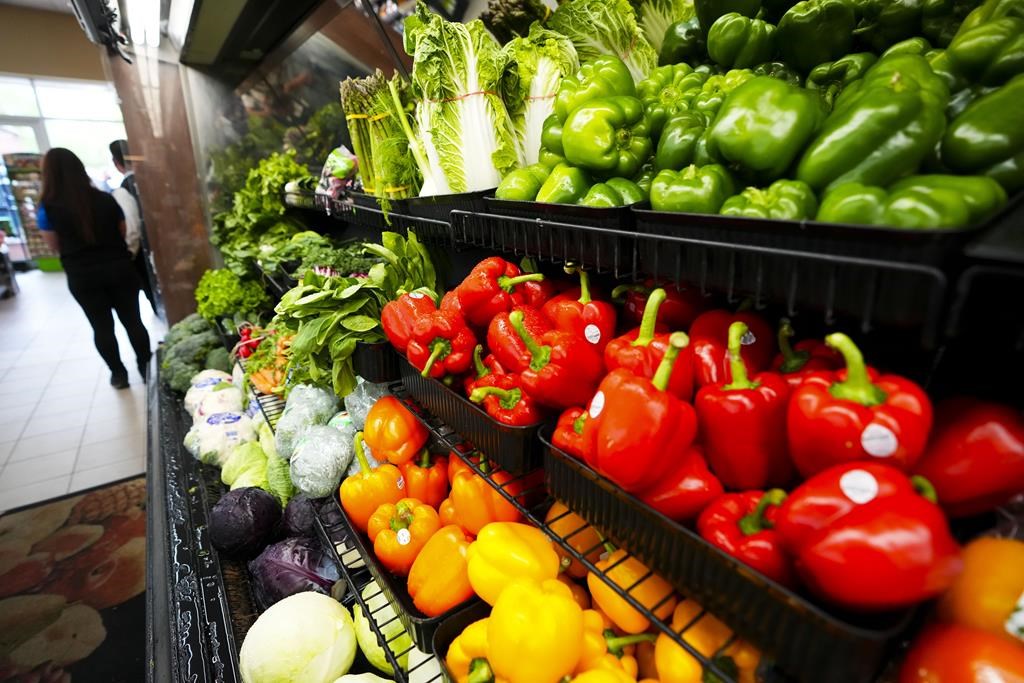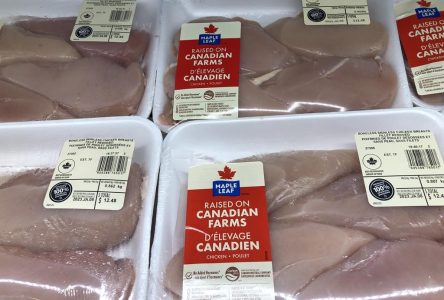TORONTO — As overall inflation slows, the cost of food continues to climb for Canadians — but experts say there should be some relief by the end of the year.
Food prices grew by 10.4 per cent year-over-year in January, according to data released Tuesday by Statistics Canada. That compares with an overall annual inflation rate of 5.9 per cent for the month.
Grocery costs saw an 11.4 per cent jump from the same time last year, up slightly from December’s 11 per cent rise, while food purchased from restaurants rose 8.2 per cent — up half a percentage point from the month prior driven by higher demand for takeout and fast food.
The federal agency said the price of meat, which saw a 7.3 per cent bump, drove much of the uptick. Meanwhile, the cost of bakery products was up 15.5 per cent, dairy products 12.4 per cent and fresh vegetables 14.7 per cent.
On a monthly basis, fresh or frozen chicken prices jumped nine per cent from December, marking the largest month-over-month increase since 1986.
But with supply chain disruptions subsiding, Royal Bank of Canada economist Nathan Janzen said food inflation should start to slow. He said the bank’s latest forecast shows it dipping below three per cent by the end of 2023.
“We are expecting growth in those prices to plateau and … and we are starting to see some signs of that,” he said.
“Year-over-year price growth in grocery prices is still extremely high, but it’s been kind of flattish since last fall. What we’re seeing is probably still, at least in part, the impact of those earlier global supply chain disruptions, transportation disruptions, as well as spikes in agricultural commodity prices earlier last year and those shocks have unwound to an extent.”
Janzen cautioned that Canadians shouldn’t expect to pay less for their groceries in the near future.
“It’s easier for prices to go up than down,” he said. “We’re not expecting prices to decline, just to grow at a slower rate.”
Fraser Johnson, a professor of operations management at Ivey Business School, said supply chains “are starting to normalize” after two years of disruptions.
“But there still are these pockets of issues,” he said. “A lot of companies are still trying to catch up in terms of increases in labour costs and transportation costs. You’ve got the war in Ukraine, which is affecting commodity prices. The price of eggs is up between 15 and 20 per cent over the last year because of avian flu. So all these things are compounding.”
Johnson, the director of the Ivey Purchasing Managers Index, an economic index which measures the month-to-month variation in economic activity as indicated by a panel of purchasing managers from across Canada, noted there has been a “steady decline” in price increases since the peak of March 2022. He predicted the next eight to 10 months will bring “a gradual easing” of costs to consumers, including for groceries.
“It’s not going to turn on a dime,” he said, calling inflationary highs of recent years a “generational problem.”
“What we’re going to see is a steady gradual reduction in terms of prices because companies have got to work with their suppliers to be able to bring their costs back in line,” Johnson added. “But I think a year from now, certainly by the end of this year, that we’ll see a relaxing of prices and costs.”
This report by The Canadian Press was first published Feb. 21, 2023.



